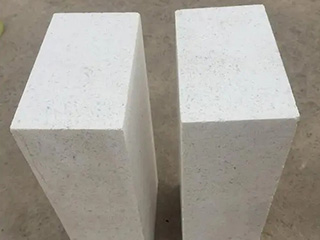Mullite bricks are a type of refractory brick that are used in high-temperature industrial processes such as steel production, cement manufacturing, and glassmaking. These bricks are made of a combination of alumina and silica, and they have a number of environmental benefits when compared to other types of refractory materials. In this article, we will explore these benefits in more detail.
1.Energy Efficiency
One of the main environmental benefits of using mullite bricks is that they are highly energy-efficient. This is because they have a high thermal conductivity, which means that they can transfer heat more effectively than other types of refractory materials. This results in less heat loss during the production process, which in turn means that less energy is required to maintain the desired temperature.
2.Reduced Emissions
Another important environmental benefit of using mullite bricks is that they can help to reduce emissions from industrial processes. This is because they have a lower thermal expansion coefficient than other types of refractory materials, which means that they are less likely to crack or break when exposed to high temperatures. This reduces the likelihood of hot spots forming, which can lead to the release of harmful pollutants into the atmosphere.
3.Longer Lifespan
Mullite bricks also have a longer lifespan than other types of refractory materials, which means that they need to be replaced less frequently. This can help to reduce waste and lower the environmental impact of industrial processes. Additionally, because mullite bricks are more durable, they are less likely to break during installation or use, which can further reduce waste and emissions.

4.Recyclability
Another important environmental benefit of using mullite bricks is that they can be recycled at the end of their lifespan. This is because they are made of natural materials such as alumina and silica, which can be broken down and reused in other products. Recycling mullite bricks reduces the amount of waste that goes into landfills and conserves natural resources.
5.Reduced Heat Loss
Mullite bricks have a low thermal conductivity and are excellent insulators, which means that they can help to reduce heat loss during industrial processes. This is particularly important in industries such as steel production and glassmaking, where maintaining a consistent temperature is crucial to the quality of the final product. By reducing heat loss, mullite bricks can help to improve the efficiency of these processes, which in turn reduces energy consumption and emissions.
6.Reduced Raw Material Consumption
Mullite bricks require less raw material to produce than other types of refractory materials. This is because they are made from a combination of alumina and silica, which are naturally occurring minerals. By reducing the amount of raw material required, mullite bricks help to conserve natural resources and reduce the environmental impact of industrial processes.
In conclusion, mullite bricks offer a number of important environmental benefits when compared to other types of refractory materials. They are highly energy-efficient, reduce emissions, have a longer lifespan, are recyclable, reduce heat loss, and require less raw material to produce. By using mullite bricks in industrial processes, companies can reduce their environmental impact and move towards a more sustainable future.
Contact: Mgr. Han
Phone: 0086-13589497465
Email: 1255953279@qq.com
Add: Industrial Area of Lingzi Town,Zichuan District,Zibo City, Shandong,China